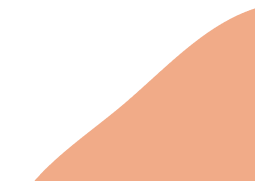1. What are Solar Inverters?
Solar inverters are essential components in photovoltaic (PV) systems, responsible for converting the direct current (DC) generated by solar panels into alternating current (AC) that can be used by household appliances or fed into the electricity grid. They play a crucial role in harnessing solar energy and turning it into a viable renewable energy source.
2. Applications of Solar Inverters
Solar inverters have a wide range of applications in different sectors due to their ability to convert DC from solar panels into AC, which is used by household appliances and the electricity grid. Here are some primary applications of solar inverters:
Residential Solar Systems: Solar inverters are an integral part of residential rooftop solar installations, which help homeowners generate clean energy and reduce their dependency on the grid. Solar inverters in such systems ensure that the electricity produced by solar panels is compatible with home appliances and the grid.
Commercial Solar Installations: Growing environmental concerns and reducing costs of solar installations are driving more businesses and commercial entities to adopt solar energy. Solar inverters are used in commercial and industrial solar PV systems to efficiently convert the solar-generated DC into AC for use in commercial buildings, manufacturing units, or to be sold back to the grid.
Utility-Scale Solar Power Plants: Large-scale solar power plants require solar inverters to handle massive amounts of power generated by thousands of solar panels. In these projects, advanced solar inverters help maximize the conversion efficiency while ensuring grid code compliance and effective power management.
Off-grid Photovoltaic Systems: In remote areas where grid access is unavailable or unreliable, off-grid solar systems are used to provide electricity. Solar inverters play a crucial role in these systems by converting solar energy into usable AC power for appliances and devices within off-grid homes or communities.
Hybrid Systems: Solar inverters are also used in hybrid systems that combine solar energy with other power sources, such as energy storage solutions (e.g., batteries) or diesel generators. Hybrid inverters allow for effective energy management and storage, ensuring continuous power supply even when sunlight is not available.
Microgrid Applications: Solar inverters, particularly smart inverters, are used in microgrid systems to enable local energy generation and management. They facilitate local load balancing and peak shaving, improving the stability and reliability of microgrids.
Electric Vehicle Charging Stations: As electric vehicles become more popular, solar inverters are used in solar-powered charging stations to convert solar DC into AC suitable for charging electric vehicles, providing an environmentally friendly power source.
These applications demonstrate the versatility of solar inverters and their increasing importance in various sectors and contexts, driven by the growing demand for renewable energy sources.
3. Technological Developments in Solar Inverters
The solar inverter industry has experienced significant technological advancements in recent years. These include the development of:
Microinverters: These small inverters work independently on each solar panel, improving the efficiency of the system, especially in non-optimal sun conditions.
Power optimizers: These devices are installed on individual panels and increase overall system efficiency by adjusting the output for the best possible energy yield.
Hybrid inverters: Combining the functions of traditional inverters with energy storage systems, hybrid inverters enable users to store excess solar energy for later use.
4. Solar Inverters Market Demand
The solar inverters market demand is anticipated to grow steadily in the coming years, driven by a variety of factors. Global awareness of the importance of renewable energy sources, coupled with governmental policies and incentives supporting solar power deployment, are contributing to the increased adoption of solar photovoltaic systems. As more residential, commercial, and utility-scale solar projects are implemented, the demand for solar inverters is expected to rise correspondingly.
Several other elements also contribute to the market's growth:
Declining solar panel prices: As the cost of solar panels continues to decrease, solar energy becomes more affordable for consumers, leading to higher installation rates and an increased need for solar inverters.
Technological advancements: Ongoing innovation in solar inverter technologies enhances system efficiency and performance, making solar installations more attractive to potential customers.
Energy storage integration: With a growing interest in energy storage solutions that are compatible with solar installations, such as battery storage systems, the demand for advanced solar inverters capable of managing energy storage is set to increase.
Grid modernization initiatives: The development of smart grid networks and efforts to implement renewable energy sources into the grid will further propel demand for solar inverters, particularly those designed for grid-tied or hybrid systems.
Taking these factors into account, the solar inverters market is poised for significant expansion in the foreseeable future, fueled by increased demand for clean, renewable energy and advancements in solar inverter technology.
5. Solar Inverters Industry Development Trends
Key industry development trends in the solar inverters market include:
Continuing technological innovation and increasing efficiency
Growing interest in energy storage systems integrated with solar installations
Development of smart grid-compatible inverters for better energy management
Ongoing price reductions due to economies of scale and competition
6. Solar Inverters Supply Chain Analysis
The solar inverter supply chain includes suppliers of raw materials, components, and subsystems, as well as manufacturers, distributors, and end-users. Key factors impacting the supply chain are:
Fluctuating prices of raw materials and electronic components
Regional manufacturing capacity and market penetration
Collaborations, partnerships, and joint ventures among industry stakeholders
Compliance with global quality and safety standards
7. Solar Inverters Market Competition Landscape
Competitive landscape analysis typically involves identifying key players in the market, their market share, product offerings, and strategic initiatives. The solar inverter market is characterized by intense competition, with several global and regional players competing for market dominance. Mergers, acquisitions, and partnerships are common strategies for gaining market share.
8. Solar Inverters Development Differences in Regions and Countries
The solar inverter market development varies across regions and countries due to differences in solar energy potential, government policies, incentives, and financing options. Developed countries generally have well-established solar markets, whereas emerging economies are experiencing rapid growth and increased investments in solar energy.
9. Risks and Challenges for Solar Inverters
Potential risks and challenges in the solar inverter market include:
Fluctuating prices of raw materials and components
Technological obsolescence due to rapid advancements in the industry
Increasing competition and the need to constantly innovate to stay ahead
Political and regulatory changes affecting renewable energy development and adoption
10. Conclusion
In conclusion, the solar inverter market is expected to continue growing throughout 2023, driven by increased demand for renewable energy, technological advancements, and competitive pricing. However, market players must navigate the various risks and challenges to remain successful in this rapidly evolving industry.




